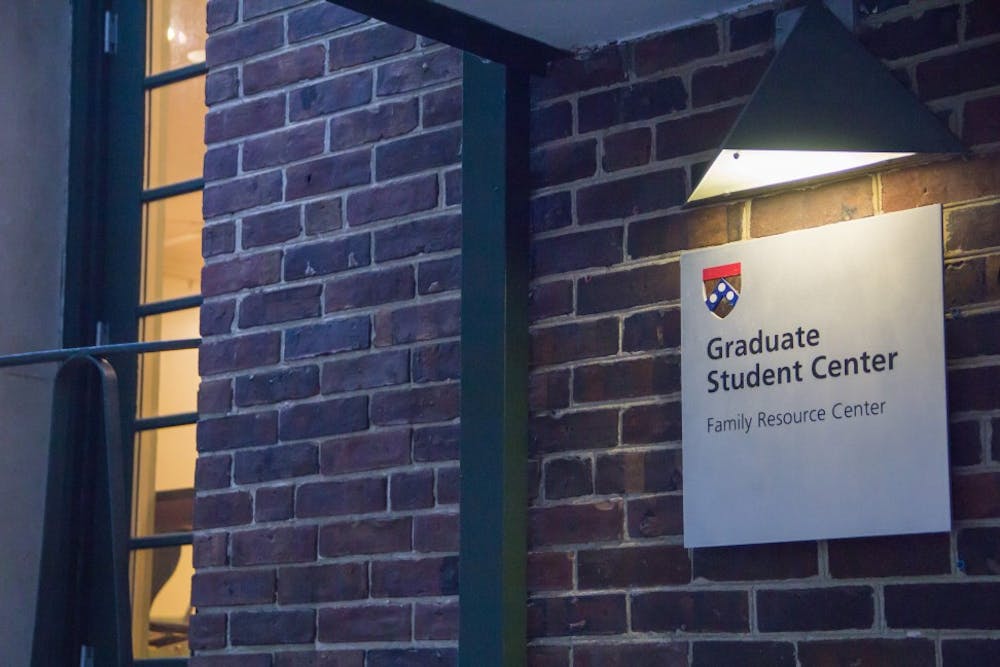While graduate students make up more than half of Penn's 25,000 students, many have grown frustrated with the lack of graduate-specific spaces on campus.
In response to these concerns, the Graduate and Professional Student Assembly passed an official resolution to address the lack of specific spaces for graduate and professional students on Jan. 30.
While the resolution does not say that GAPSA will create additional spaces on campus, the passing of the resolution reflects the widespread support within the graduate student population, GAPSA Student Life Chair and fourth-year Nursing Ph.D. candidate Matthew Lee said.
He added that the resolution places the issue on the GAPSA executive board's agenda. The members of the executive board could potentially meet with administrators to advocate for establishing more graduate-specific spaces on campus.
GAPSA Student Life Committee member and second-year Near Eastern Languages and Civilizations graduate student Rawad Wehbe, who drafted the resolution, said the Graduate Student Center on 36th and Locust Walk and the Graduate Study Lounge in Van Pelt Library are the only well-known graduate-specific spaces on campus.
“Common spaces dedicated for graduate and professional students contribute to a sense of recognition and appreciation in an environ ment that is predominately undergraduate-centric," Wehbe wrote in the resolution. "Often too crowded, or unaccommodating, the GSC alone fails to address graduate and professional students’ needs.”
The resolution comes after a newly-implemented policy barring graduate students automatic access to undergraduate dorms in fall 2018.
Executive Director of College Houses and Academic Services Marty Redman said the decision to limit automatic access to undergraduate dorms was collectively made by Penn Police, Residential Services, and CHAS. Previously, anyone with a Penn Card could gain access, a number exceeding 40,000 people.
RELATED:
Penn Franklins, graduate mental health group, looks to future growth despite slow start
Grad. group's kickoff event promises first-gen. low-income students greater visibility
Lee, who used to hold wellness events in Harnwell College House's rooftop lounge, said “[the policy] is not just an issue of exclusion from community spaces that we can use for events.” He added that it also complicates access to dining halls for graduate students with dining plans.

Redman said the decision to limit graduate student access was made in light of increased security concerns and respect for the private living spaces that undergraduate students occupy.
“The real rationale is that we’re being a little more protectionist,” Redman added. “I think there’s a lot of access being provided — it’s just not automatic anymore.”
Wehbe said the resolution to address the lack of space for graduate students follows the results of a mental health survey conducted by GAPSA in spring 2018. In the open-response portion of the survey, students called for more communal spaces to interact with other graduate students and do work when the GSC, libraries, and lounges are overcrowded.
“Grad school can be isolating, so a place to casually interact with other students from the program would be nice," a student said in the survey. "The grad student center is OK, but too far for me to go if I just want to work away from my desk for half an hour between experiments. Basically, I think the grad student center needs satellite locations."
Graduate need for space extends beyond just group events, fourth-year Criminology Ph.D. candidate Asminet Ling, who is also the School of Arts and Sciences graduate student government president, said. Graduate students often have additional responsibilities as teaching assistants and need to store materials and hold private meetings, Ling added.
“We don’t have a space where we can rent out just for grad students,” Ling said. “We kind of have to compete with other organizations. That could be undergrads or grads, and so there are times when we end up having to shift details and logistics for our events because we keep hitting unavailable blocks or spaces.”
Graduate students have expressed concerns over graduate-specific space as far back as 1996, which led to the Graduate Student Center being built in 2001. Students have also cited poor living conditions and lack of renovations at Sansom Place East, Penn’s only dorm for graduate students.









